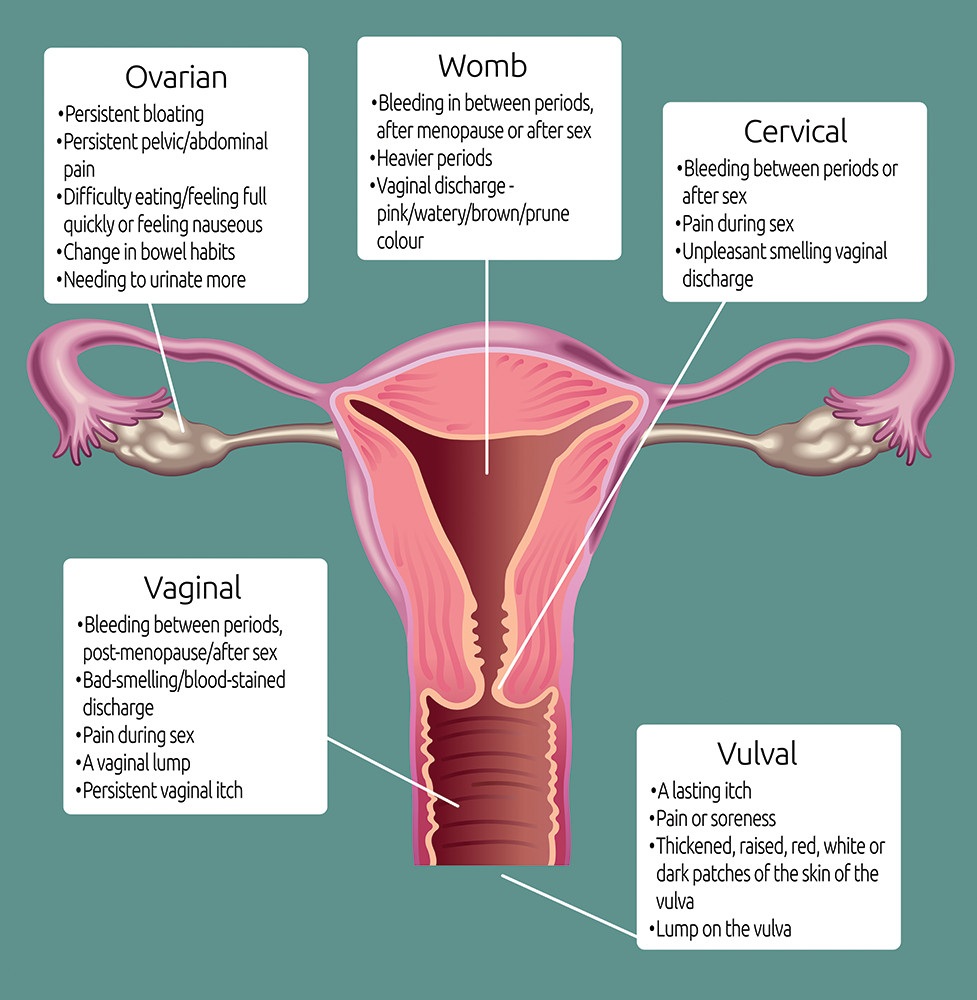Cancer is a condition characterised by the uncontrolled growth and reproduction of cells in a specific area of the body. These cancerous cells can invade and damage surrounding healthy tissues and organs.
Cancer sometimes begins in one part of the body before spreading to other areas. This process is known as metastasis. 1 in 2 people will develop some form of cancer during their lifetime.

Gynecological Cancer
Gynecological cancer starts in the female reproductive organs, and can affect women, some transgender men, non-binary people assigned female at birth and some men assigned female at birth. These include uterine, ovarian, cervical, vaginal and vulval cancer.
Consult your GP or healthcare professional for help.
If you are experiencing any symptoms or concerned, contact your GP or healthcare professional to rule out any underlying health conditions that may require further investigations or treatment.
Contact NHS 111 can help if you think you need medical help right now.
You can get help from NHS 111:
- by using 111 online
- in the NHS App
- by calling 111
It may be helpful to complete the following Symptom Checkers which will provide a letter to take to your GP or Healthcare Professional.

Breast Cancer
Breast cancer in women is the most common cancer in women in the UK. Anyone can get breast cancer.
Symptoms of breast cancer in women may include:
- a lump, or swelling in the breast, chest or armpit
- a change in the skin of the breast, such as dimpling (may look like orange peel) or redness (may be harder to see on black or brown skin)
- a change in size or shape of 1 or both breasts
- nipple discharge (if you are not pregnant or breastfeeding), which may have blood in it
- a change in the shape or look of your nipple, such as it turning inwards (inverted nipple) or a rash on it (may look like eczema)
- pain in your breast or armpit which does not go away – breast pain that comes and goes is usually not a symptom of breast cancer
How To Check Your Breasts
See a GP if:
- you have a lump or swelling in your breast, chest or armpit
- you have any changes in your breasts, chest or nipples that are not normal for you
- you have pain in your breast or armpit that does not go away
Cancer Treatment
Cancer staging is a way of describing the size of a cancer and how far it has grown. When doctors first diagnose cancer, they carry out tests to:
- check how big the cancer is
- whether it has spread into surrounding tissues
- whether it has spread to other parts of the body
This is important as staging guides the treatment of cancer and prognosis. Generally, the lower the numerical stage, the more likely that treatment will have a good outcome. For example, a more localised cancer may be treated with surgery and/or radiation therapy, but cancer that has spread (metastasised) is difficult to surgically remove and may be treated with chemotherapy and other systemic drugs, and has a worse prognosis.